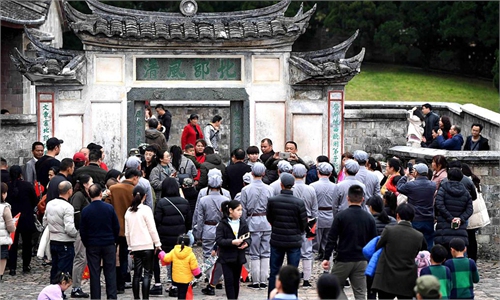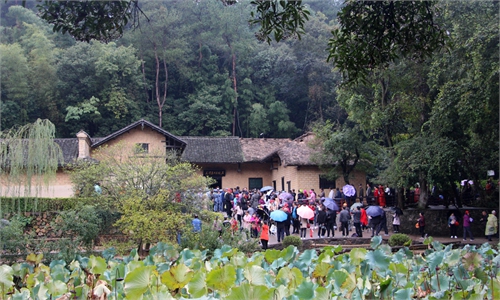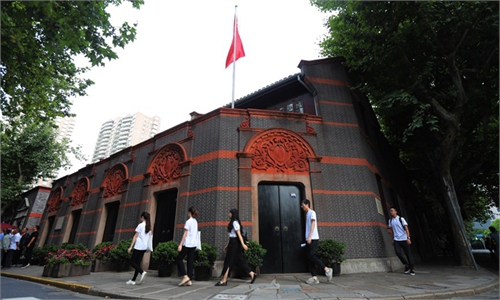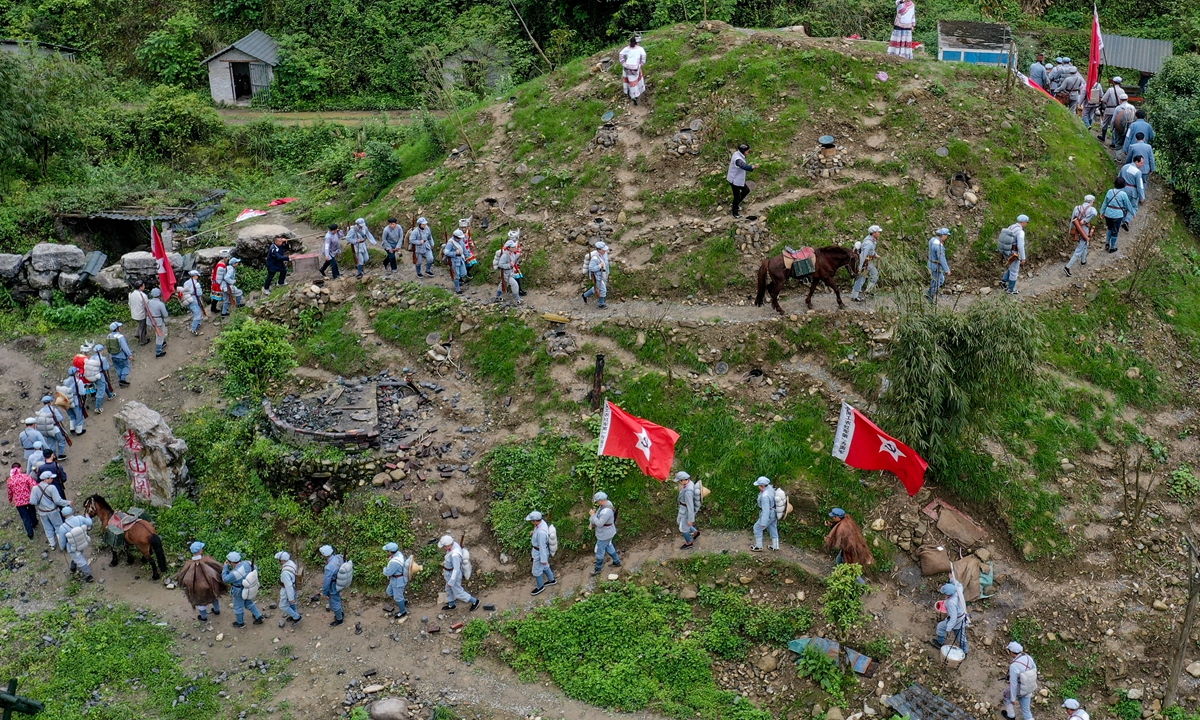
Actors recreate the scenes of the Red Army's Long March in Loushanguan in Zunyi, Southwest China's Guizhou Province on April 20. Loushanguan is actively promoting its red tourism for tourists to trace revolutionary relics and better experience the red culture. Photo: Xinhua
This year marks the 100th anniversary of the founding of the Communist Party of China (CPC). The popularity of red tourism during the May Day holidays is expected to soar as many Chinese people are planning to visit red tourism attractions in the coming May Day vacation to celebrate the centenary of the CPC.
Jinggang Mountains, known as the "cradle of the Chinese revolution," in East China's Jiangxi Province and Zunyi Conference memorial hall in Southwest China's Guizhou Province are welcomed by travelers, and the popularity of red-themed scenic spots and museums continues to rise.
From 2004 to 2019, China's red tourism resources have been continuously expanded, with the number of people taking part in red tourism increasing from 140 million to 1.41 billion each year, according to the Ministry of Culture and Tourism.
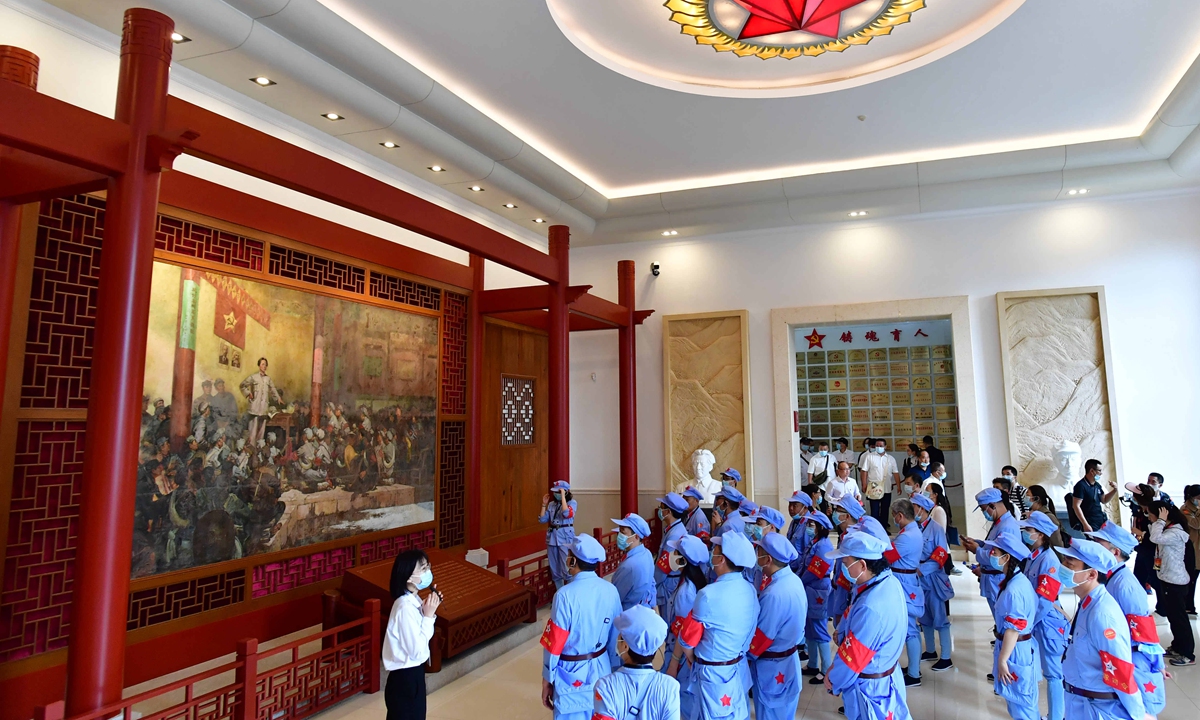
Tourists visit the Gutian Conference Memorial Hall in Shanghang county, Longyan city, East China's Fujian Province on Monday. Photo: CNSphoto
"Many red-themed scenic spots have become places for middle-aged and elderly people to relive their youth and passion and reflect on the changes of the times, and for young people to listen to historic stories and pay tribute to heroes and role models," Hu Heping, vice head of the Publicity Department of the CPC Central Committee and Minister of the Ministry of Culture and Tourism, said at a press brief in March.
38-year-old Yu Yue, living in Mianyang, Southwest China's Sichuan, is planning to bring her daughter to Luding Bridge over the Daduhe River, in Luding county, Sichuan Province, to learn the true heroic feat of the Red Army during the Long March.
He believes that the material conditions of the young generation are sufficient, and parents should let them know that life is actually hard. This is to help them understand that the happy life today was thanks to the sacrifice of countless revolutionary martyrs, Yu told the Global Times.
Yu's daughter is only six, so he chooses a red spot with natural scenery to better attract her daughter's interest.
Veteran Wang Mingmei, from Daqing, Northeast China's Heilongjiang Province, is also determined to visit the remains of Japan's notorious Unit 731 headquarters in Harbin, two-hour drive away from Daqing, with her 8-year-old daughter.
Wang told the Global Times that her daughter was so shocked after watching the film The Sacrifice, a film about the War to Resist US Aggression and Aid Korea (1950-53), and asked whether these historical events were real.
"As a result, I decide to bring her to historical sites to learn the real history and let her learn on her own how our CPC heroes sacrificed so we could have a happy life today," Wang said.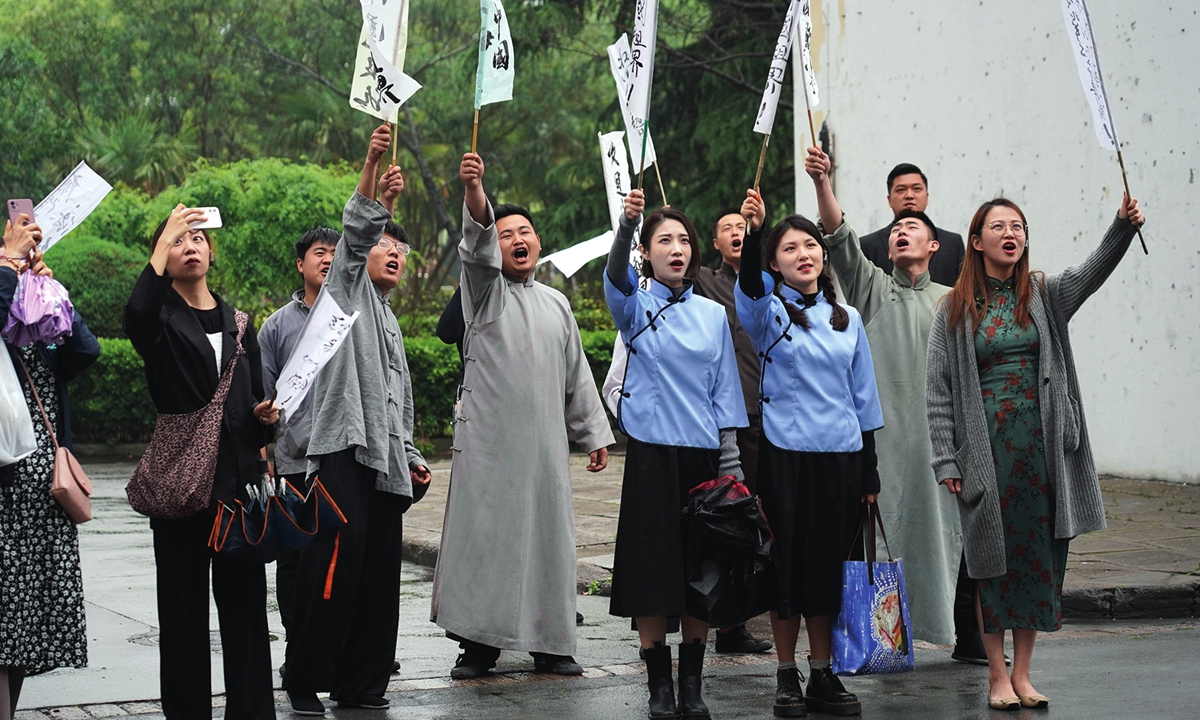
Visitors play in a patriotic anti-imperialist drama to better learn the history of the CPC during their visit to Shanghai Film Park on Tuesday. Photo: Xinhua
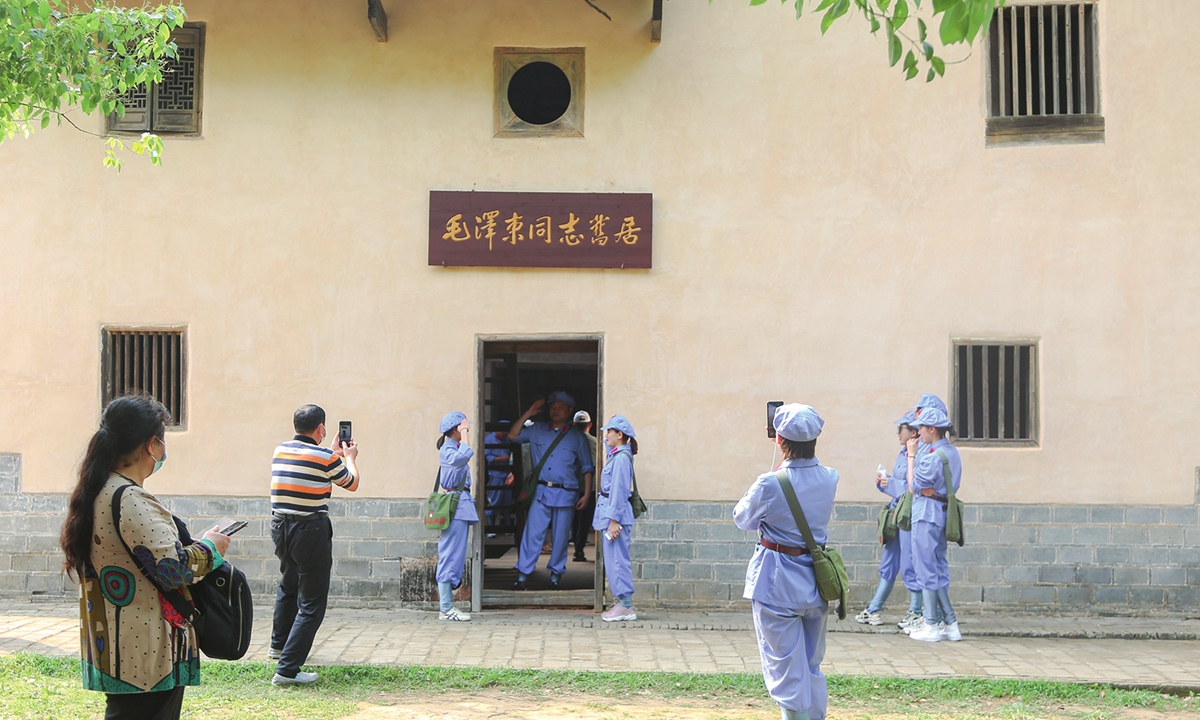
Tourists dressed in uniform of the Chinese Workers' and Peasants' Red Army take photos at the former residence of Mao Zedong in Ruijin city, East China's Jiangxi Province on April 24. Photo: CNSphoto

A special train for red-themed tourism from Chengdu to Panzhihua in Southwest China's Sichuan Province firstly pulls out in April. Train staff in ethnic groups' costume welcome passengers at the front of the carriages. Photo: CNSphoto
